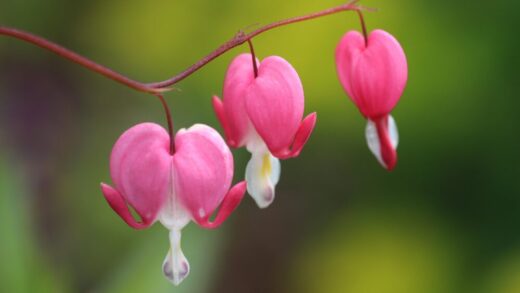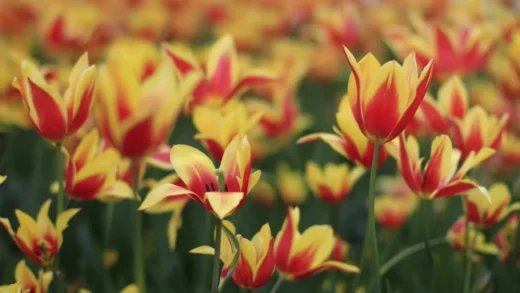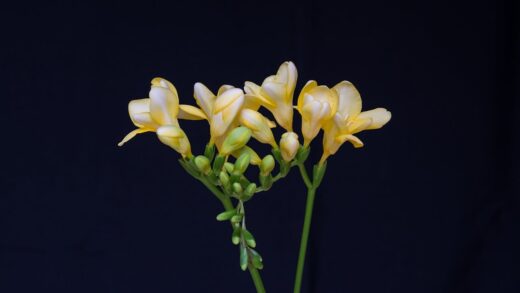The light requirements of the clustered tulip are a direct reflection of its native habitat in the sun-drenched, open landscapes of Central Asia. To thrive and perform to its full potential in a garden setting, it is essential to replicate these high-light conditions. The clustered tulip is a sun-loving plant, and providing it with an abundance of direct sunlight is the single most important factor for ensuring robust growth, a profusion of flowers, and the long-term health required for perennialisation. Insufficient light is a primary cause of poor performance, leading to weak plants that may fail to bloom altogether.
For optimal results, the clustered tulip should be planted in a location that receives full sun. In horticultural terms, ‘full sun’ is defined as an area that gets at least six hours of direct, unfiltered sunlight per day during the growing season. An ideal site would be a south-facing slope, an open flower bed away from the shade of trees or buildings, or a rock garden that is exposed to the sun for most of the day. This ample light exposure fuels the process of photosynthesis, which is how the plant creates the energy needed to produce its vibrant flowers and, crucially, to replenish the bulb for the following year.
The timing of this sun exposure is also important. The clustered tulip does most of its growing, flowering, and energy storage in the spring, from its emergence until the foliage begins to die back in early summer. Therefore, it is essential that the chosen location receives its full sun during this spring window. A spot under a large deciduous tree, for example, might seem suitable because it is sunny in early spring before the tree’s leaves emerge. This can be an effective strategy, allowing the tulips to complete most of their life cycle before the canopy casts dense shade later in the season.
While full sun is the ideal, the clustered tulip can tolerate a small amount of shade, a condition often described as part sun or light shade. This would be a location that receives between four and six hours of direct sun per day. However, performance in these less-than-ideal light conditions will likely be diminished. The plants may produce fewer flowers per stem, the stems themselves might be taller and weaker as they stretch towards the light (a phenomenon known as etiolation), and the overall vigour of the plant may decline over time, reducing its ability to naturalise and multiply.
The importance of full sun exposure
Full sun exposure is non-negotiable for achieving the best possible display from the clustered tulip. The intensity and duration of sunlight directly impact several critical aspects of the plant’s life. Firstly, strong sunlight is the primary driver of photosynthesis, the process by which the plant converts light energy into chemical energy in the form of sugars. These sugars are the fuel for all of the plant’s growth, from the development of its leaves and stems to the production of its brilliantly coloured flowers. Without sufficient light, the plant simply cannot produce enough energy to support a robust floral show.
Beyond the immediate effect on flowering, sunlight plays a vital role in the long-term perennial nature of the bulb. After the flowers have faded, the foliage remains active for several weeks. During this post-blooming period, the plant is working to replenish the energy reserves within the bulb that were depleted during flowering. It is also creating the energy stores needed to survive the summer dormancy and to initiate the growth of the following year’s flower bud. Abundant sun exposure during this critical recharging phase is essential for ensuring the bulb has the strength to return and bloom again the next spring.
Adequate sunlight also contributes to the physical strength and structure of the plant. In a sunny location, the stems of the clustered tulip will be sturdy and compact, easily supporting the multiple flower heads characteristic of the species. In contrast, tulips grown in insufficient light will often become ‘leggy’. Their stems will be elongated, thin, and weak as the plant etiolates, or stretches, in an attempt to reach more light. These weak stems are often unable to support the weight of the flowers, causing them to flop over and creating a much less attractive display.
Furthermore, a sunny and open location promotes good air circulation around the plants. This helps the foliage to dry off quickly after rain or morning dew, which is a key factor in preventing the development and spread of fungal diseases like tulip fire. Shady, damp conditions create a much more hospitable environment for these pathogens. Therefore, by providing full sun, you are not only meeting the plant’s energy needs but also contributing to a healthier growing environment that reduces the risk of disease.
Sunlight and the naturalisation process
For gardeners wishing to establish a self-sustaining and expanding colony of clustered tulips, providing the right light conditions is fundamental to the process of naturalisation. Naturalisation is the ability of a plant to not only survive and return each year (perennialise) but also to propagate itself and spread, forming larger drifts over time. The clustered tulip achieves this by producing small offset bulbs at the base of the main bulb. The energy required for the formation and growth of these new bulblets is derived entirely from photosynthesis, which is directly dependent on sunlight.
In a location with ample sun, a healthy parent bulb will have surplus energy after it has provided for its own needs and the development of the next year’s flower. This surplus energy is channelled into the production of offset bulbs. Over several years, these offsets will mature to flowering size, and the single bulb you initially planted will become a multi-flowered clump. This process is greatly diminished or halted completely in shady conditions, as the plant will barely have enough energy to sustain itself, let alone reproduce.
The annual life cycle of the tulip is perfectly adapted to take advantage of the spring sun. It emerges and completes its flowering and foliage growth early in the season, often before taller neighbouring perennials or the leaves of deciduous trees have fully developed to cast shade. This allows the tulip to occupy a niche where it can receive the high levels of light it needs at the most critical time. When choosing a site for naturalising, it is therefore important to consider not just the light conditions in early spring, but also how the light will change as the season progresses.
Ultimately, a planting of clustered tulips in a sunny, well-drained spot where they can be left undisturbed will reward the gardener with an ever-increasing display. The initial investment in selecting the perfect site pays dividends for years to come. A shaded location, however, will likely lead to disappointment, with the tulips gradually dwindling in number and failing to bloom, rather than multiplying. Sunlight is the engine that drives the spread and long-term success of a naturalised tulip planting.
Planting strategies for optimal light
To ensure your clustered tulips receive the light they crave, several planting strategies can be employed. The most straightforward approach is to dedicate a specific area of the garden that is known to receive sun all day long. The front of a south-facing border, a purpose-built rock garden, or a raised bed are all excellent choices. In these locations, the tulips will not have to compete with other, taller plants for access to sunlight during their crucial spring growing period.
Another effective strategy is to plant the clustered tulips amongst low-growing perennials or groundcovers that will not overshadow them. Plants like creeping phlox, certain sedums, or thyme are good companions as their low-growing habit allows the tulips to rise above them and receive unimpeded sunlight. This type of companion planting can also help to hide the untidy foliage of the tulips as it begins to die back later in the season. The groundcover fills in the space, providing continued interest in the garden bed.
Planting clustered tulips under deciduous trees is a classic and often successful strategy, but it requires careful consideration. The key is to plant them near the edge of the tree’s canopy, rather than directly next to the trunk where the shade will be densest. In early spring, before the tree leafs out, this area will receive plenty of direct sun. The tulips can often complete the most critical part of their growth and energy-storage cycle before the tree’s canopy becomes too dense. This method works best with trees that leaf out later in the spring, such as oaks or ashes.
When planting in a mixed border with other perennials and shrubs, consider the mature size and growth rate of the neighbouring plants. Position the tulips towards the front (the sunniest side) of the border, away from taller plants that will quickly overshadow them in late spring. It is a game of forward planning, visualising what the border will look like in May and June, not just in March and April when the tulips are in bloom. This foresight ensures that the tulips have their ‘place in the sun’ secured for the entire duration of their active growth phase.
Recognizing signs of insufficient light
The clustered tulip will provide clear visual signals if it is not receiving enough sunlight. Learning to recognize these signs of light deprivation is important, as it allows you to diagnose the problem and take corrective action, such as moving the bulbs to a sunnier location in the autumn. The most obvious and disappointing symptom of insufficient light is a failure to flower. The plant may produce leaves, but if it has not been able to store enough energy from the previous year due to lack of sun, it will not have the resources to form a flower bud.
One of the earliest signs is etiolation, or the stretching of the plant’s stems. In a shady spot, the tulip stems will grow unusually long and often become weak and spindly as they reach for a light source. This results in a ‘leggy’ appearance, and the flimsy stems are often unable to support the weight of the blooms, causing them to flop over. The colour of the foliage may also be an indicator. Leaves grown in low light may be a paler or less vibrant shade of green compared to those grown in full sun.
The flowers themselves can also indicate a lack of light. Even if the plant does manage to bloom, the flowers may be smaller than expected, and there may be fewer blooms per stem than is typical for the variety. The flower colour may also appear washed out or less intense and saturated than it should be. Furthermore, the longevity of the blooms may be reduced, with the flowers fading and dropping their petals more quickly than those on plants in a sunnier location.
Over the long term, the most definitive sign of insufficient light is the gradual decline of the planting. Instead of naturalising and increasing in number each year, a colony of clustered tulips in a shady location will do the opposite. Each year, fewer and fewer plants will return, and those that do will be weaker and less likely to flower. This dwindling performance is a clear indication that the plants are in an energy deficit, unable to store enough resources to sustain themselves from one season to the next, a problem that can only be solved by providing them with more sun.


















